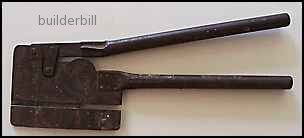 |
|||||
How to identify asbestos in your home.Here I talk about how to identify asbestos. You will need to be able to do this if you have a house that was built prior to or around 1980, then there is a good chance that somewhere in the building there will be products that contain asbestos. So how to identify asbestos? The only sure way to identify asbestos.The only positive way to detect the presence of asbestos in a product or substance is inspection by a trained technician using a scientific microscope Contact a licenced asbestos removalist in your area and have samples of the material tested at a registered testing laboratory. A visual inspection, sometimes may identify asbestos if you know what to look for.Assuming that the house is in the right age group, 1920's to 1990's then a visual inspection alone may help a prospective purchaser or intending renovator to decide that the house has asbestos problems. As stated above there is only one sure way, by lab tests, to truly determine that it does not have asbestos problems. However unless the house purchase is about to go ahead, nobody wants to spend a lot of money on expensive tests, so below are a few pointers that may help you to identify asbestos containing products in a property.
Check out my other pages in this series for photographs which will also help you to identify asbestos products with a visual inspection.
The Fibro cutter on the right was in effect just a pair of shears. With a lot of care it was possible to get a reasonably straight cut but more often than not they left a fairly crude jagged edge. As a result the cut edges were nothing like as straight and the joints less precise, than on later more modern sheets reinforced with cellulose fibres that replaced Fibro. Fibro cutters hardly work on moderns sheets as they are not as brittle as the old asbestos sheets were. Other more invasive methods that may identify asbestos containing products.Once again, a word of caution, suitable precautions should be taken when removing even the smallest pieces
There are now on the market Asbestos Testing Kits of various types. Basically what happens is that the company sends you a kit with instructions of how to safely take a couple of samples. These samples are then sent back to the company and their approved testing laboratory test them and you get your result back in a couple of weeks. Not found it yet? Try this FAST SITE SEARCH or the whole web |
Hire Equipment  Furniture Fittings - Architectural Hardware - Electronic Locking Systems - Technical Hardware BuilderBill sponsorship Asbestos related pages.NEW -Asbestos Glossary Introduction to asbestos in house constructionAsbestos Containing Products How to identify asbestos. Asbestos Danger Asbestos Management Asbestos Removal Reader's QuestionsAsbestos houseAsbestos house renovation. Asbestos Tilux. Asbestos-cladding Asbestos - Disclaimer.This is a highly complex and stringently regulated field. I am not a scientist, I am not a government spokesperson or anyone with any authority to talk or give professional advice on the subject in your area. What I am is a retired builder with a large amount of practical experience fixing fibrous asbestos cement products and then later removing them. In 1995 I was issued an asbestos removal licence (43133) by the Northern Territory Work Health Authority, and did many asbestos removal jobs, complying with Australian Work Health (OH&S) Regulations and the NOHSC National Code Of Practice For The Safe Removal Of Asbestos. I hope you get something of value out of these pages, but a word of caution, at the last count I get visitors from 132 different countries, there is no way that I can give specific advice that would comply with the regulations in your country, state, district or local area. In other words, the onus is on YOU to check out the regulations where you live, and comply with them. If you have any doubts get advice from a licensed person IN YOUR AREA. |
||||
|
|
|||||
|
Please Note! The information on this site is offered as a guide only! When we are talking about areas where building regulations or safety regulations could exist,the information here could be wrong for your area. It could be out of date! Regulations breed faster than rabbits! You must check your own local conditions. Copyright © Bill Bradley 2007-2012. All rights reserved. |
|||||
